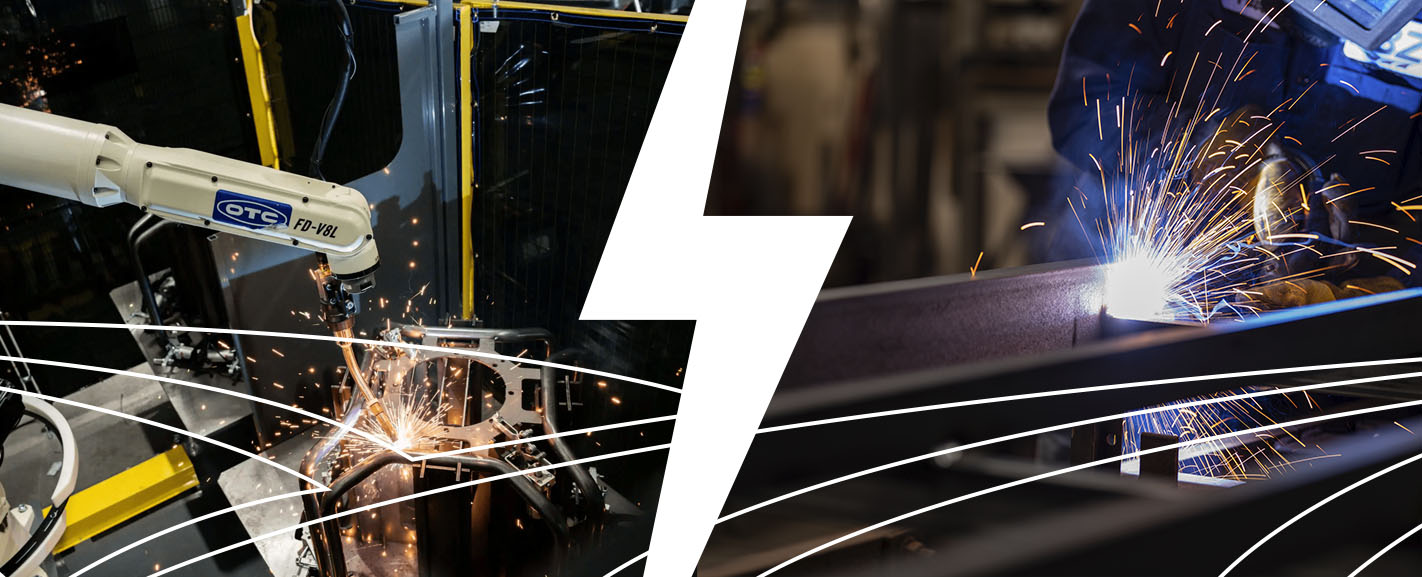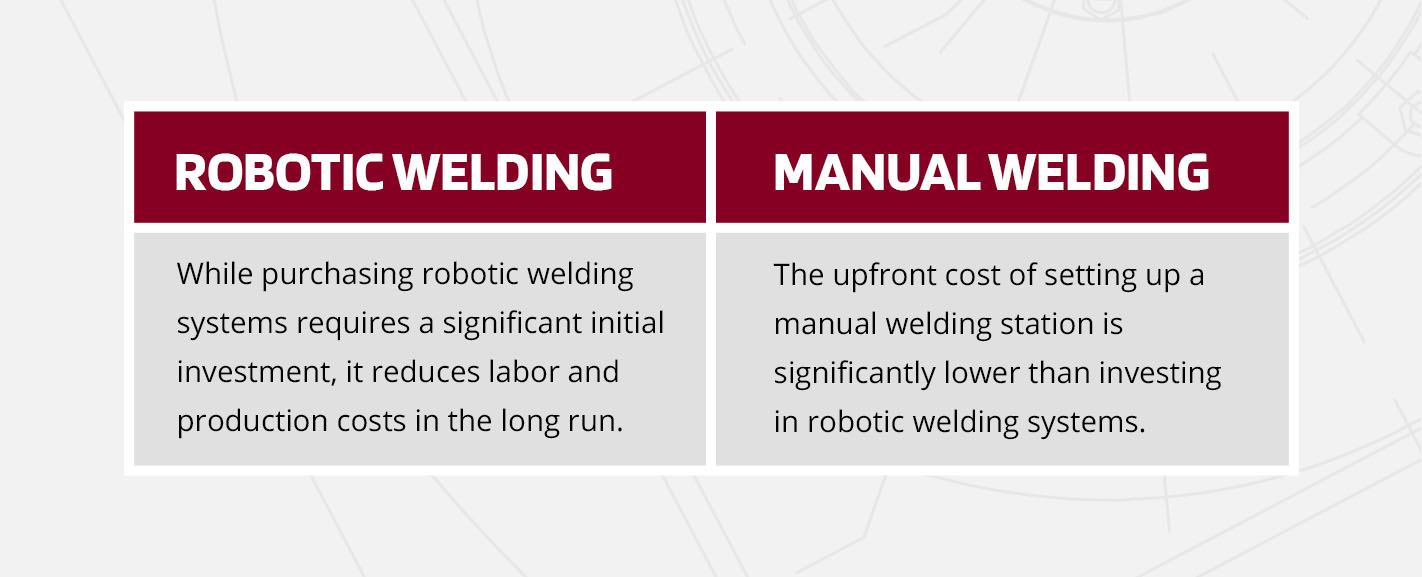

Welding is an essential process in manufacturing and other industries, like construction, automotive and aerospace, that creates durable bonds between two materials, typically metals, by heating them at the seams and allowing them to cool and solidify together.
Welders use many methods to piece different materials together. Robotic and manual welding are two primary distinctions. Robotic welding is an advanced, automated technique that depends on robots, while manual welding is the traditional version that relies on human expertise or ingenuity. Let’s explore the differences between robotic and manual welding.
Robotic welding uses robots equipped with specialized tools to join materials precisely and efficiently. These systems fulfill specific welding parameters and follow a precise path to produce consistent, high-quality welds. With advanced sensors, cameras and software, robotic welding systems can execute accurate and quick welds.
The robot connects to welding equipment that supplies energy and filler materials for creating the welds. Robotic welding systems have sensors and vision systems to achieve the desired accuracy, precision and repeatability. This technology offers numerous benefits, including increased productivity, improved weld quality, reduced material waste and enhanced worker safety by minimizing exposure to hazardous fumes and intense heat. Robotic welding has revolutionized the manufacturing industry by streamlining production processes and elevating the quality of welded components.
Robotic welding delivers numerous benefits.
While robotic welding is superior in some ways, a few drawbacks limit its implementation.

Manual welding is a fabrication technique performed by humans instead of machines. It joins two or more metal pieces by heating them using an electric arc or flame. The welder is responsible for controlling the equipment and following the weld paths. Manual welders’ skills and experience determine the results. Working with a highly skilled welder increases the probability of delivering higher-quality, accurate and consistent results.
Manual welding has unique benefits that make it a better choice in some instances.
Manual welding has numerous drawbacks, most of which stem from its reliance on skilled human workers to perform the bulk of tasks.
Other disadvantages of manual welding include lower-quality results and increased production of waste material. It’s also not a dependable method for the large-scale production of equipment parts.
PBZ Manufacturing is a one-stop shop for all your manufacturing needs, including engineering, assembling, finishing and shipping. We also have years of experience in robotic welding and a team of welders to collaborate with you throughout the process.
Our innovative robotic welding systems ensure accurate, precise and consistent welding results. The machines also enable us to repeat your designs numerous times because they have plenty of storage. Contact us today to learn more about how your business can benefit from our first-rate robotic welding processes.
Manufacturing is in our DNA. Since Paul B. Zimmerman opened his small welding and repair shop in 1947, we've remained true to our roots: metal manufacturers serving in the Spirit of Christ. We're committed to carrying forward the service and business principles that brought us here. We're also passionate about advancements in technology and continuous improvements to meet your needs. It's why we have expanded our manufacturing and assembly capacity and added new flat and structural lasers.
Our new logo honors this legacy while signaling an exciting future of advanced capabilities and expanded capacity. We're committed to giving your ideas shape. What can we make for you?